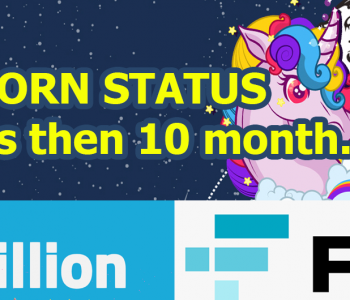 Blog
Blog
Fake Bounty Hunters and an Inflated Telegram Channel are…
Lots of ICOs and cryptocurrency projects praise the effectiveness, high engagement and overall efficiency of bounty programs to grow numbers on their social channels, such as Facebook, Twitter, Telegram and so on. But there’s a dark side to this that involves click farms and fraud, which a lot of people do not seem to be aware of or neglect. Most likely, a massive amount of crypto projects think they have to do it this way, but instead of doing good, they more or less harm themselves from the beginning.
What is the idea of bounty programs?
Bounty programs are usually started to develop a kind of community and reward those who support a project by producing meaningful content or acting as ambassadors for the project. Originally, they functioned very well, and people who were most likely to be interested in investing in a project were rewarded as well to share and spread the message about the project.
More Bounty Hunters Isn’t Always Better
Because in recent month, ICOs have become more and more popular and investors have included in their due diligence metrics about how large the community is around a project or how many followers they have on social media channels when making decisions, a whole market around these “bounty campaigns” has evolved. One even could say a whole industry has developed around it, involving companies which most likely claim they are community managers and bring generic traffic, when in reality, they are just click farms or have an army of low-level workers hired or compensated to participate in the bounty programs, share them on fake Facebook profiles and follow the projects with non-active Telegram accounts.
Projects are now looking big because they have, let’s say, 5000, 10,000 or 20,000 people on Telegram, but most likely, none of these followers is in any way interested in investing in the project for real or interested in any sense other than hunting the bounty. I sometimes do not understand, do project owners really think that sophisticated investors and especially funds or syndicates do not see this? There are projects which have thousands of people on their channels, but then their explainer video only has a couple hundred views.
How do bounty hunters harm the ICO ecosystem?
Fake followers, likes and users have already been a problem in the start-up game for a long time. With the emergence of ICOs, the problem has become worse as ICOs try to fool people into believing they are hot and that they have a community around them when actually, it is not much more than a big farce.
When fake users on Telegram engage with your brand and your channel, it most likely looks dodgier for the real people interested, which could be a breeding ground for a real community. Everyone wants the quick win, and there are tons of services that are bragging that they are responsible for the community growth of this or that successful ICO, whereas they were only a small part of it and their service was not the reason people invested. So, if you are a person doing an ICO, don’t get fooled.
What Can You Do?
As an ICO investor, you can check very carefully how active the channels are on Telegram or simply look at the people who are liking the posts or the followers on Twitter. In most cases, it is very easy to find out if it’s a real community or just some people who run accounts to hunt for bounty.
As a company running an ICO, you need to be aware that building up a community takes time. All the stories you hear of people raising millions in minutes are about companies who had certain communities around them and just transferred them to their new project. It’s like if a celebrity is opening a restaurant, he or she will always have an advantage over the new guy in the business. So, if you are new, take your time. Immerse yourself in the community, then you will understand what they are looking for. It’s not just about raising the numbers on your Telegram channel because that’s what investors want to see; don’t think they are stupid.
About the author
Juergen Hoebarth is Managing Director of Tokenization Ltd. His involvement in cryptocurrencies dates back to 2014, and he was an early ICO investor of Ethereum and NEO. Juergen has profound and solid experience in the digital start-up and blockchain ecosystem and is also an evangelist who speaks about the potential of tokenization enabled via platforms such as Ethereum, EOS, NEM, NEO and Cardano.









